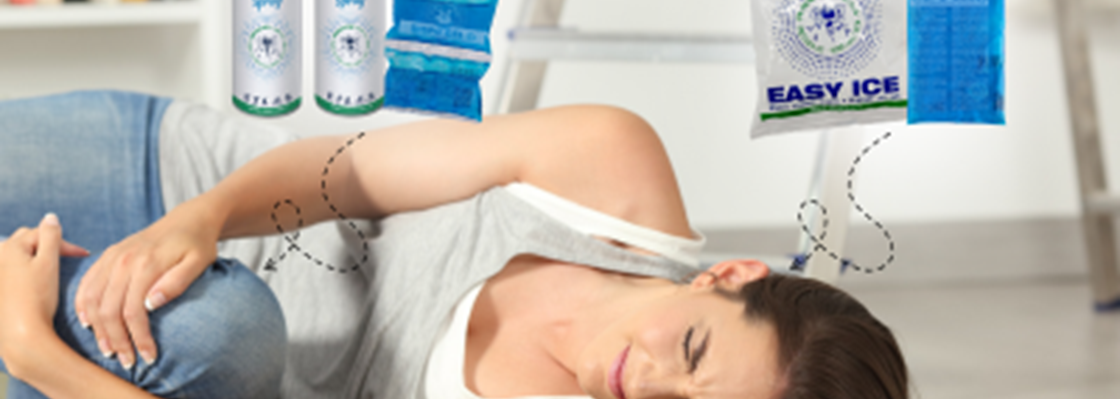How is a first aid kit prepared? Dispotech's ice line

Creating a first aid kit is increasingly important at the workplace. A well-stocked kit can be very helpful in many emergency situations, from small household injuries to more serious accidents.
Below, we will provide several guidelines with practical tips, inspired by the guidelines from emergency and health authorities. These will guide you in preparing a complete kit that is functional and suited to a variety of situations.

1. Kit container
- Size and portability Choose a sturdy, waterproof box that is easy to carry.
Rigid, compartmentalised bags or small suitcases are ideal for organising materials in an orderly manner. - Labelling Label the container as “First Aid” and make sure that everyone in your home knows where it is.
For external use, such as in the car or outdoors, opt for a compact and easily recognisable kit.
2. Basic materials
An effective first aid kit should contain the following basic elements:
- Plasters of various sizes: useful for covering cuts and abrasions.
- Sterile bandages and gauze: to stop bleeding and protect open wounds.
- Medical adhesive tape: for securing bandages.
- Scissors and tweezers: scissors can cut gauze and clothing if necessary; tweezers are used to remove shards, splinters or thorns.
- Cotton wool and sterile gauze pads: to clean the skin and dry any disinfectants.
- Disposable gloves: to protect the person who is providing aid and reduce the risk of infection, in the event of contact with body fluids.
- Digital thermometer: indispensable for monitoring the temperature in the event of a sudden fever.
- Face mask: useful for artificial respiration manoeuvres or where there is a contamination risk.
3. Disinfectants and Antiseptics
- Saline solution or sterile water: useful for cleaning wounds and removing impurities.
- Disinfectant for wounds: hydrogen peroxide and povidone-iodine solutions (commonly known as Betadine) are essential to reduce the risk of infection.
- Antibacterial gel or disinfectant wipes: to clean hands before giving aid.
4. First response drugs
- Painkillers and anti-inflammatory drugs: such as paracetamol or ibuprofen, to relieve mild pain and inflammation. Always include an information leaflet.
- Antihistamines: for mild allergies, they can be useful in reducing allergic reactions that are not serious.
- Cream or gel for burns: for relieving pain due to small burns or sunburn.
- Oral rehydration salts: to prevent dehydration in the event of diarrhoea or heatstroke.
- Antibiotic ointment: for small wounds, as it helps reduce the risk of infection.
5. Tools for emergencies
- Isothermal blanket: very useful for hypothermia or shock, as it helps maintain body temperature.
- Sphygmomanometer and saturation meter: if possible, add a small blood pressure monitor and a saturation meter (to measure blood oxygenation), which are useful for respiratory emergencies.
- Instant ice packs: to reduce swelling due to bruising or sprains.
- Hot/cold gel packs: if placed in a microwave oven or in boiling water, they are perfect for heat therapy, while in the freezer they are ideal for cold therapy.
- Ice spray: soothes pain.
- Torch: for nighttime emergencies or in poorly lit places.
6. Documents and instructions
- First aid manual: a small manual or sheet with instructions on dealing with emergencies can make the difference. Some kits already have illustrated sheets.
- List of emergency numbers: keep an updated list of useful numbers, such as the number for the emergency department, a family physician or poison centre.
7. Specific tools
If there is someone in your family with particular needs, consider adding:
- Specific drugs: for example, an inhaler for asthma sufferers, or self-injected adrenaline for those with severe allergies.
- Sterile syringes and needles: if strictly necessary and for prescribed use.
- Rehydrating solutions for infants or the elderly, if there are particularly fragile people at your home.
8. Checking and periodic maintenance
- Check expiry dates: it is best to check your kit every six months, to replace any expired products.
- Container storage: always keep the kit in a dry, clean place to prevent damage or material deterioration.
9. Training and refresher training
- First aid training: having a first aid kit is fundamental but knowing how to use it is just as important. Training (or training personnel) is necessary so that all the material listed can be used properly.
- Periodic refresher training: first aid regulations are subject to periodic variations. Refresher courses are necessary to keep abreast of developments and changes.
Create your own first aid kit
Dispotech is able to furnish quality first aid materials exclusively to dealers and distributors in the industry. Instant ice, hot/cold gel packs (also for joints) and ice spray are some of the products that you should have in your kit.












